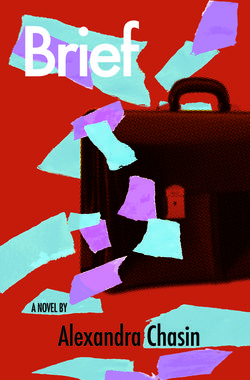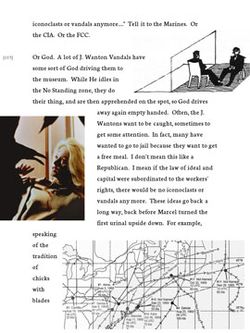By Elatia Harris


Cover photo of Brief, snow globe and screenshots from Brief, courtesy of Jaded Ibis Press
Alexandra Chasin is a Brooklyn-based writer who turned to fiction with her acclaimed collection, Kissed By (FC2, 2007). Her new work, Brief (Jaded Ibis Press, 2012), is an app novel for the iPad — the first-ever literary novel to take the form of an app. She is an Associate Professor of Literary Studies at Lang College, The New School.
ELATIA HARRIS: Alex, chance and probability are intimately involved in the experience of reading Brief, as well as a truly embodied participation by the reader. You can turn the page, for instance, but you can't turn back to the last page you just read and flipped away from. Its words and images would not be distributed that way again for an interval that it would almost take the 10,000 year clock to reckon. This not being able to go back seems to play with the idea of the personal history of the narrator, about whom we start finding out before personhood was achieved. The narrator has an unusual take on motivation, for someone who grew up and turned art vandal — wouldn't you say?
 ALEXANDRA CHASIN: The initial impetus for writing Brief was to experiment with an anti-psychoanalytic account of individual personality and action. I wanted to extend, in the direction of absurdum, the proposition that we under-value historical and cultural forces as determinants of behavior. What if we are more formed by those forces than by the domestic and familial forces that psychoanalysis loves so much?
ALEXANDRA CHASIN: The initial impetus for writing Brief was to experiment with an anti-psychoanalytic account of individual personality and action. I wanted to extend, in the direction of absurdum, the proposition that we under-value historical and cultural forces as determinants of behavior. What if we are more formed by those forces than by the domestic and familial forces that psychoanalysis loves so much?
EH: The narrator is certainly at pains to establish that nothing exceptional occurred at home. Just TV, playdates, the Cold War, and the occasional crewcut — that sort of thing.
AC: The narrator's birthdate is, in effect, the starting point of Brief, and its location in time — that moment of cold-war psychosis, in which televisions made their way into every household, in which pop culture began to achieve truly mass proportions and to infiltrate the bastions of high-art. The nine months prior to the narrator's birthdate and the two years after, are effectively the time of the piece, their developments linked to — shown to be determining of — the development of an art vandal.
EH: The images speak to that era. They are furiously torn up, not to mention randomized, but they're evocative.
AC: Yes, I imagined the images having an evocative relation to the text and era, and also of the atmosphere in the courtroom where the narrative is set. The images are almost all manipulated — either fragmented or composited or abstracted — to exaggerate their oblique relation to the text. Maybe there is a similar obliquity in the relation of image and text in certain books by W.G. Sebald — Austerlitz and The Rings of Saturn.
EH: Being an app helps this along, of course…
AC: What the app does is constantly change the relationship of text to image, which reinforces visually a question the text raises about the radically changing status of the image in the early 1960s. The text argues that the convergence of a paranoid Cold-War psychology, the invasion of television into almost all U.S. households, and the turn from abstraction to pop and op art in the high-culture zone, would absolutely require a renegotiation of the status of the image. The operation of the app represents those historical changes in virtually every screen.
I'm always concerned with that kind of correspondence between form and content, or between content and medium. A great example is Mark Z. Danielewski's House of Leaves, in which the book's typography and formatting serve the content of the narrative, often tracing the footsteps of the protagonist.
Read more »
